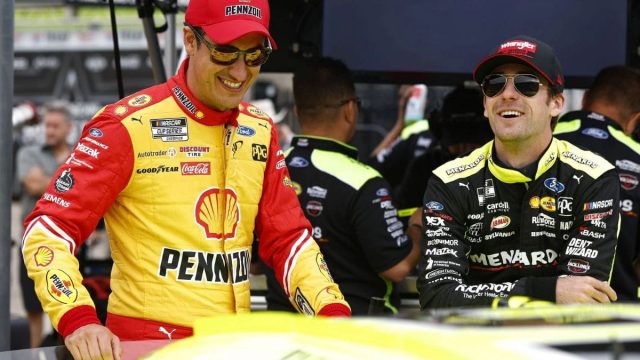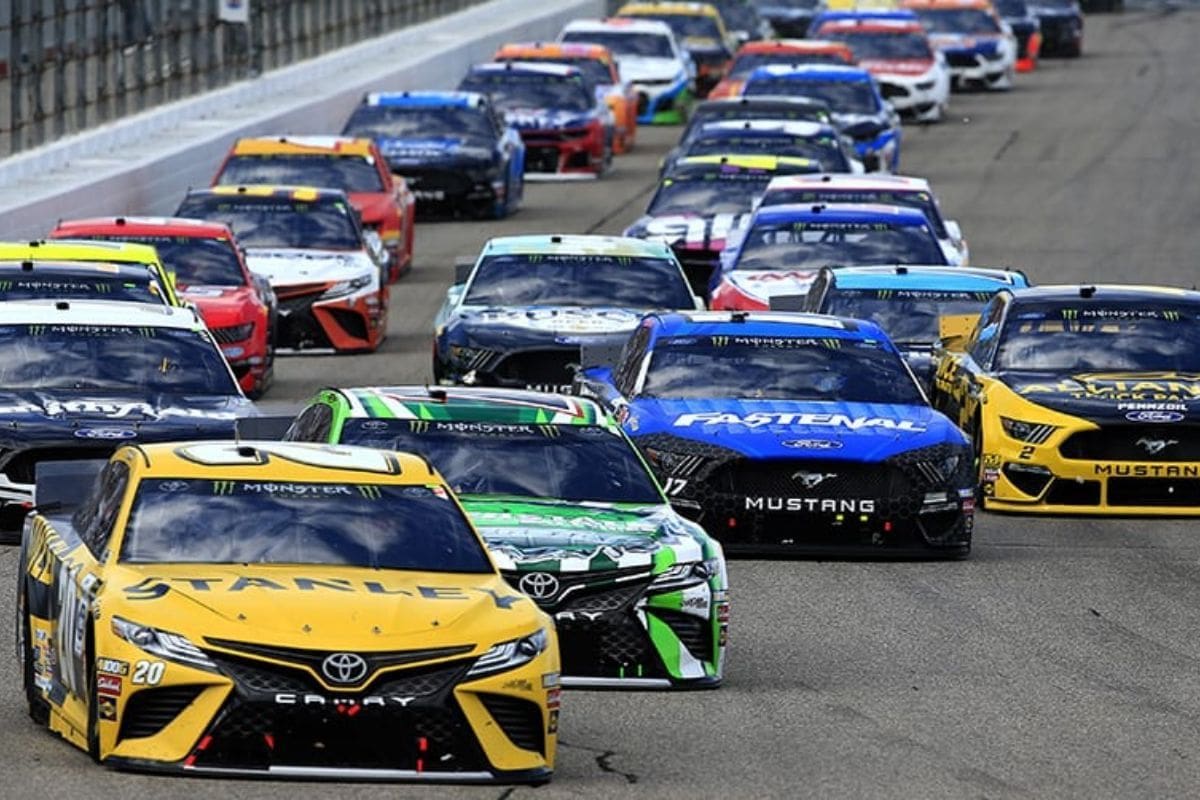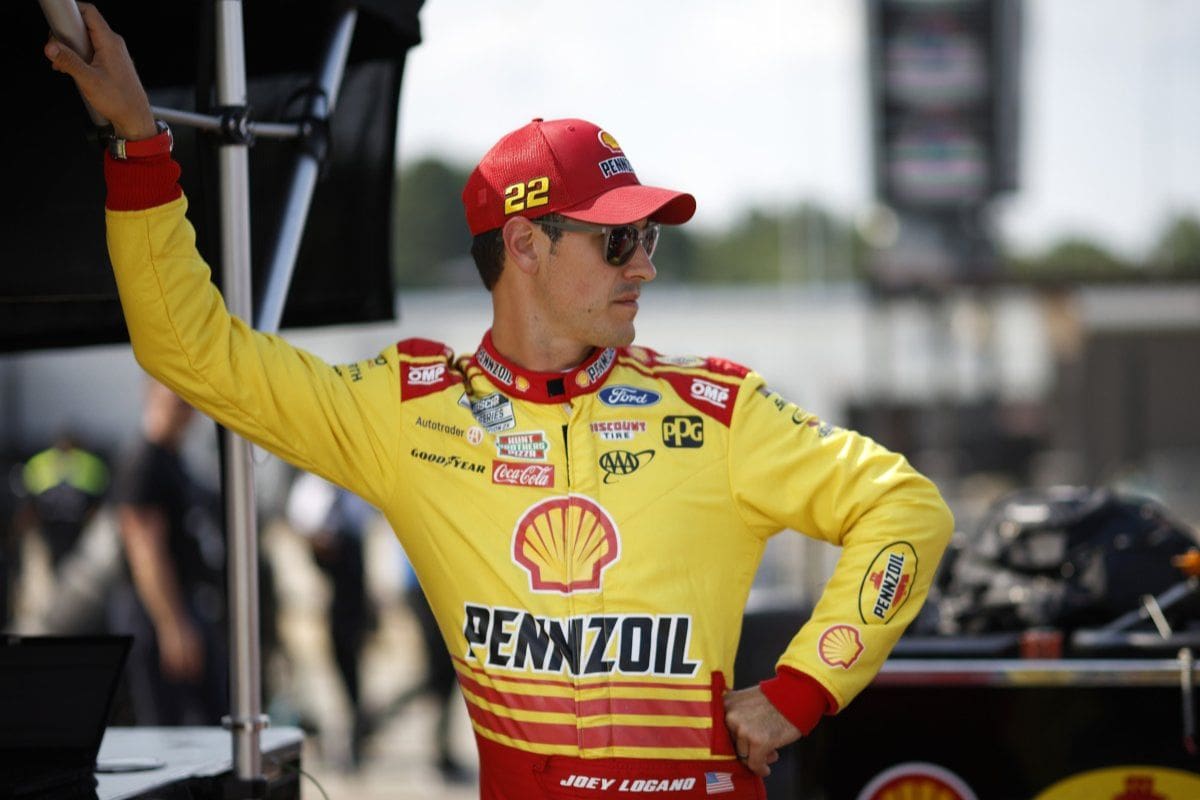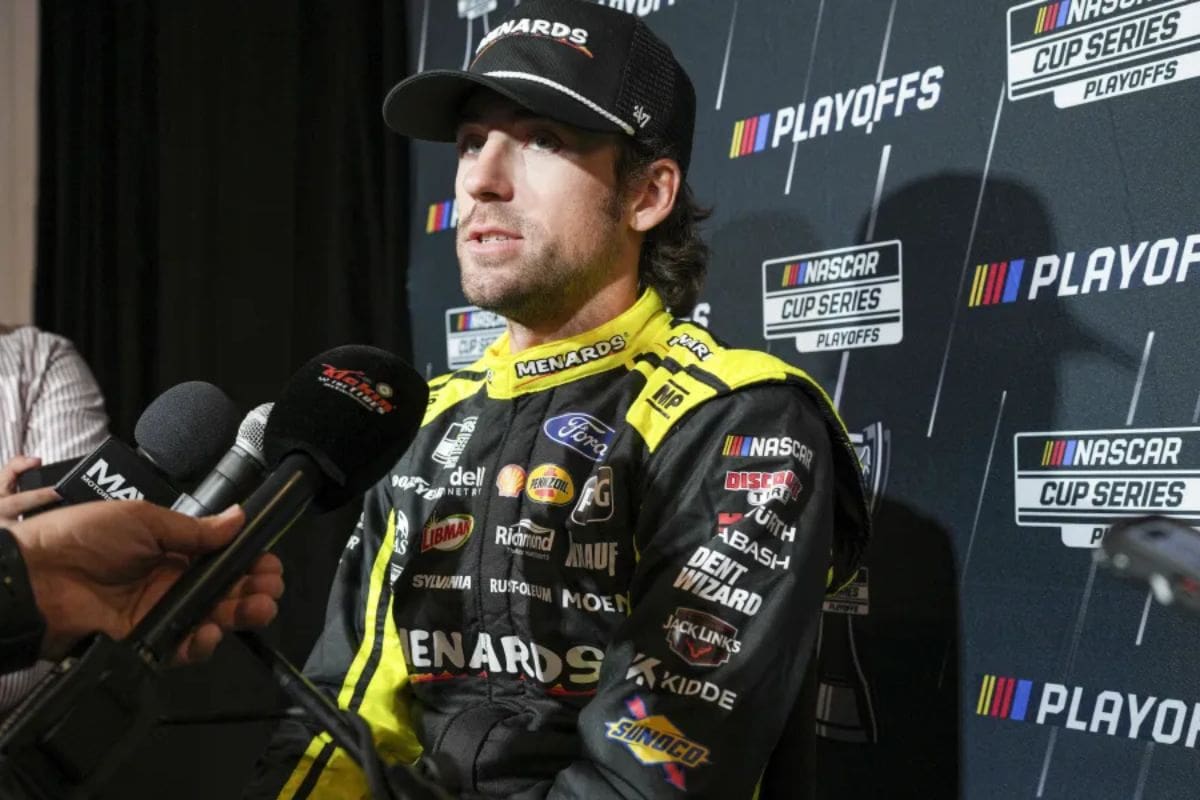Joey Logano and Ryan Blaney’s Overtime Victory: The recent overtime victory of Joey Logano and Ryan Blaney at Atlanta serves as a demonstration of Team Penske‘s tactical insight in a racing environment, particularly in their duel against Trackhouse Racing. Key decisions, such as timely pit stops and tire management, played critical roles in shaping the outcome of this race. While Logano’s ability to seize the advantage following a caution was impressive, Blaney’s performance on fresher tires proved similarly crucial. This analysis invites a closer examination of the dynamics at play and the implications for both teams moving forward in the championship landscape.
Key Highlights
- Joey Logano’s strategic pit stop on Lap 178 with fresh tires proved crucial for his overtime victory over Trackhouse Racing.
- Ryan Blaney’s strong teamwork with Logano and effective handling of his car helped maintain competitive positioning throughout the race.
- Trackhouse Racing drivers showcased aggressive tactics, but Penske’s experience and strategic execution ultimately outperformed them in the final laps.
- The unexpected caution and subsequent overtime raised tensions, impacting race dynamics and allowing Logano to capitalize on his lane choice.
- Logano’s victory enhances Penske’s championship standing while demonstrating the importance of teamwork and strategy in competitive racing.
The Final Laps and Key Moments
The final laps of the race at Atlanta were marked by intense competition and tactical movements, embodying the essence of critical motorsport. As the race approached its finale, the calculated decisions made during the final pit stop—Lap 178—became vital. Key players, including Joey Logano and Daniel Suarez, opted for fresh tires, positioning themselves for a fierce showdown that would define the outcome of the race.
Amidst the high-pressure environment, the stakes increased dramatically when Ryan Blaney encountered a notable setback due to a collision instigated by Chris Buescher. Blaney’s Ford sustained considerable damage after hitting the wall, leading to a pivotal moment where Team Penske’s pit crew had to react swiftly. Their adept handling of the situation, including extensive repairs and the application of fresh tires, allowed Blaney to remain competitive despite the odds stacked against him.
As the laps dwindled, the focus shifted to the renewed battle between Logano and Suarez, showcasing the resilience and tactical acumen of both drivers. Logano’s ability to navigate through traffic while maintaining a defensive posture against Suarez demonstrated the critical stakes inherent in motorsport.
As they approached the checkered flag, it became evident that the calculated choices made earlier in the race would ultimately dictate the final result. This culminated in Logano’s victorious crossing of the finish line, a reflection of Team Penske’s preparation and execution in the face of adversity.
The Caution and the Sprint to the Finish
As the race neared its finale, a seemingly innocuous caution for a stray Wal-Mart banner dramatically altered the dynamics on the track, setting the stage for a thrilling sprint to the finish. This unexpected interruption not only bunched the field but also provided an opportunity for tactical maneuvering among the drivers.
With the front runners opting for fresh tires, Ty Gibbs emerged as the leader, flanked closely by Kyle Busch, who was determined to capitalize on any slip-up.
However, the ensuing restart proved significant as Joey Logano, with a calculated push, facilitated Daniel Suarez‘s ascent to the front. The situation quickly escalated when Busch aggressively challenged Suarez, attempting to squeeze him three-wide.
At this critical crossroads, a well-timed move by Ross Chastain allowed him to connect with Suarez, forming an effective alliance that would later play an important role in the outcome.
The Penske duo of Logano and Ryan Blaney seized the opportunity to align themselves in the midst of this chaos. Their synchronization became a formidable force, overwhelming Gibbs and Busch, who were unable to mount a sufficient defense.
The Overtime and the Final Push
How would the dynamics of the race shift in overtime? As the green flag waved for the final sprint, the stakes heightened, and tactics solidified. The crash involving Noah Gragson thrust the drivers into a decisive overtime, where Joey Logano, already positioned as the leader, opted for the bottom lane. This crucial choice forced Trackhouse drivers, Daniel Suarez and Ross Chastain, to navigate the outside, which they believed would be their avenue to victory.
Key factors influencing the overtime finish included:
- Tire Advantage: Ryan Blaney’s 30-lap fresher tires provided a notable edge, enabling him to push Logano effectively while maintaining stability.
- Lane Selection: Logano’s bottom lane choice initially seemed advantageous, but it became clear that the outside line held potential as Suarez expressed confidence in its ability to prevail.
- Critical Disconnection: The moment Blaney backed off Logano’s bumper in Turn 3 marked a turning point. Chastain, struggling with older tires, lost proximity to Suarez, ultimately leading to their separation.
The final lap unfolded with tension, as Chastain briefly reconnected with Suarez only to falter again, leaving them vulnerable. Christopher Bell’s surge up the middle compounded the situation, culminating in a crash that ended the race.
The disconnect between the Trackhouse duo was the relentless force that sealed their fate, allowing Logano to cruise to victory, emphasizing the importance of tactical positioning and teamwork in the high-stakes environment of NASCAR.
Suarez’s Reaction and Performance
Frustration lingered for Daniel Suarez following the intense overtime finish at Atlanta, despite securing a commendable runner-up finish. His performance highlighted both resilience and resolve, yet the sting of a missed victory was palpable.
Suarez’s post-race reflections revealed a complex emotional landscape; although satisfied with his points gain—leaving Atlanta with a 22-point advantage—he could not shake the feeling of what might have been.
“I am happy with it, but not satisfied,” Suarez remarked, emphasizing the dichotomy of his experience. His close partnership with teammate Ross Chastain had been essential, and when Chastain’s potential setback emerged—possibly a flat tire—Suarez acknowledged the shift in his competitive landscape.
“I am happy with it, but not satisfied. I lost my pusher, my teammate. He was doing a great job, and I felt like we were going to have a great shot at it. Ross was doing an amazing job of pushing, and I don’t know if he got a flat tire or something, but once I lost him, I knew it was going to be tough. But, that is part of racing, right?” – Suarez
The loss of his primary pusher marked a significant turning point in the final laps, highlighting the intricate dynamics of teamwork in NASCAR races.
Despite securing two runner-up finishes and a victory in his last three outings at Atlanta, the emotional toll of narrowly missing a win weighed heavily on him.
“Every time you get second, you feel like you were in position to win, and you didn’t win,” he said, articulating the bittersweet nature of high-stakes competition.
“Every time you get second, it’s that close, you feel like you were in position to win, and you didn’t win, it doesn’t matter if you got a good points day or not. I don’t feel really good right now. But it’s part of it.” – Suarez
While the day yielded valuable points, the lingering disappointment suggested that Suarez, driven by a fierce desire to succeed, remains focused on the ultimate prize: victory.
Blaney’s Recovery and Playoff Implications
Defying the odds, Ryan Blaney displayed remarkable resilience at Atlanta, bouncing back from a near-catastrophic incident that threatened to derail his race. With approximately 60 laps remaining, Blaney found himself in a precarious situation, suffering considerable contact that sent his car into the wall. Surprisingly, his team managed to repair the vehicle sufficiently, allowing him to compete for a top finish.
“Honestly I can’t believe we got back up where we did.”
“The 12 boys did a really good job fixing it. I’m surprised it didn’t have more damage than what it did. From my seat, I got drilled in the left rear or the door I guess is where he hit me. The right rear got off the fence. I didn’t know how damaged we were. I was kind of able to carve up through traffic and could kind of get through the middle pretty good. Really proud of the effort” – Blaney
Blaney’s performance not only highlighted his skill but also emphasized critical implications for the playoffs. His tactical choices in the closing laps were essential, as he prioritized points over aggressive actions. This decision highlights his awareness of the ongoing playoff landscape:
- Points Advantage: Blaney is now 45 points above the cut-line, solidifying his position as a strong playoff contender.
- Tactical Choices: Opting for a conservative approach rather than risking a crash illustrated Blaney’s maturity and understanding of race dynamics.
- Team Dynamics: The effective collaboration with his pit crew to salvage the car’s performance exemplifies the importance of teamwork in high-stakes racing.
“I’m like, man, it’s going to be tight, we already have a good day going, great points, all that stuff. Yeah, third, a really good day … This thing looks ugly, but really good finish.” – Blaney
As Joey Logano became the initial driver to secure a spot in the Round of 12, Blaney’s podium finish not only enhanced his confidence but also reinforced Team Penske’s competitive edge.
News in Brief: Joey Logano and Ryan Blaney’s Overtime Victory
The overtime victory at Atlanta exemplified Team Penske‘s crucial insight, as illustrated by Joey Logano and Ryan Blaney’s coordinated efforts. Key decisions regarding pit stops and tire management played a critical role in overcoming the formidable challenge posed by Trackhouse Racing. The successful execution of these strategies not only secured a crucial win for Logano but also improved Penske’s standing in the championship race, highlighting the significance of teamwork and adaptability in achieving success in high-stakes environments.
ALSO READ: Joey Logano on NASCAR’s Transformation: What’s Changed Since His Early Days



